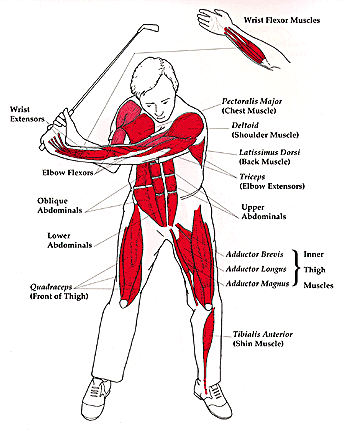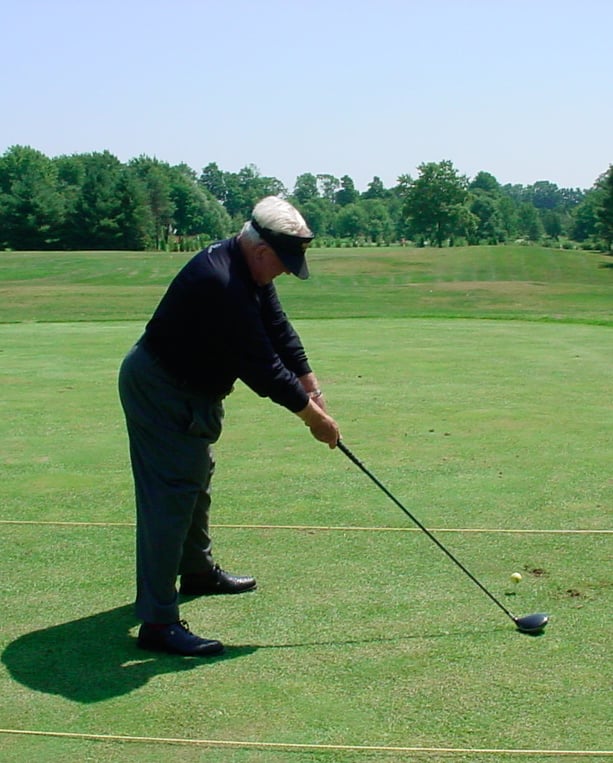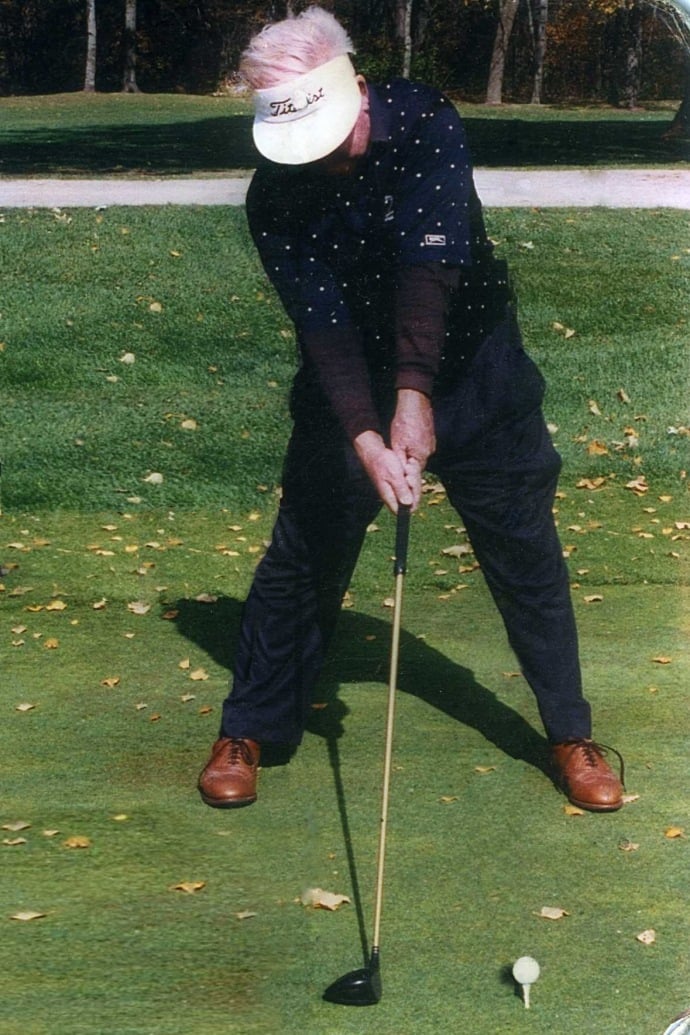By: Tim Graves, PGA
One of the most common questions we receive (seems every day) is “How can I get more distance?”
There are three areas you can work on/improve to help you get more distance on all your golf shots, in particular, your driver.
And, all of these, you can and SHOULD work on over the fall / winter (training sessions).
Those three areas are:
- Driver Technology
- Flexibility and Strength
- Swing Technique
Let’s break down each area a little.

1. Driver Technology:
A few years ago, the USGA put together a set of rules limiting how much a golf ball can “rebound” off the face of a driver (a vague description) – thus putting a limit on the distance of the drivers. Since then, the golf industry realizing they can no longer make drivers that can hit it further off the face, have been working on technology that has made the “big” headed drivers more aerodynamic (thus less air resistance in the golf swing) and more prominent sweet spots on the face.
Older technology drivers had sweet spots the size of a dime (some smaller), newer technology drivers have sweet spots the size of half dollars (some even bigger). What that means is balls hit slightly off the middle of the club face will travel much further now.
And the key is the “average driving distance” you have, not the “one” you catch that happens to fly a long way. Meaning, if your sweet spot on the driver is large and you miss hit a few shots (or more) around off the middle of the club face, you will still get good/more “average” driving distance. Meaning, overall you will have less club into the greens, etc. etc.
So, if you are looking to maximize or increase distance – you need to have a driver that is “modern” or at least less than 2 or 3 years old. These newer drivers have large sweet spots and have the highest technology for the least amount of wind/club head resistance in the golf swing.

2. Flexibility and Strength
The 2nd area to focus on with distance is flexibility and strength. And in that order. Too many worries about strength and not flexibility. Being strong with good, or great, flexibility “allows” you to get in positions in your golf swing to hit the ball with reasonable distance.
As we get older, we lose our strength and more importantly our flexibility, when we start to lose our elasticity, we can no longer create certain angles in the golf swing that will allow us to create “leverage” in the golf swing which in turn produces speed and distance.
We have produced an extensive DVD on this topic. This DVD is set up to test the areas of your body and its flexibility in these areas. It then gives you 3 or 4 exercises you can perform to regain or create increased flexibility (and strength) in those areas. This DVD designed around the single plane swing of Moe Norman – in other words, it takes the eight most significant positions of Moe’s swing and determines if you are flexible enough to “reach” those positions. If not, it gives you “easy” exercises to perform over time that in turn will help you gain those positions and eventually “allow” you to swing the club on plane.
You can see a lot more detail about the Flexibility and Exercise information at: https://watch.gravesgolf.com/

3. Swing Technique
Ultimately, the most crucial factor to get more distance is to improve your technique. It is always interesting, one of the things we do at all our schools and camps is to measure our students swing speed. We then correlate it to their driver swing speed and the average distance they should be hitting their driver. For most (those that swing 85 to 90 mph), they should be hitting their driver 230 to 240 yards (with a little roll).
For most, when they find out how far they should be hitting their driver with the speed they currently have, they are shocked. Why are they hitting it so short compared to where “their potential” says they should be hitting it? Because of technique. They are not hitting the golf ball off the “sweet spot” of the club with a “direct hit” from the club that is on the path.
In other words, they are hitting “glancing blows” that is creating side spin which is limiting or reducing the distance they should be hitting their driver.
Working on swing technique – working on getting the club on the proper single plane/path, with a square club face through impact and ultimately, limited to no side spin, will give you the maximum distance.
In conclusion, to answer the all too common question, we get from so many of our students/customers
How can I get more distance?
Answer:
1. Obtain a new/modern driver that has the highest technology for increased sweet spot and limited wind resistance (aerodynamic).
2. Work/continue to work on flexibility (especially over the “off-season” months when so many loose elasticities because of an increased static lifestyle) and…
3. Always work on improving your technique to maximize the optimal hit on the ball with limited side spin and enhanced sureness of hit.
P.S – Here is the P.S. to this article as EVERYONE will ask this question to us (in person, at schools, during webinars, across emails, etc….).
What is the fastest way to improve technique?
Answer – FIGURE OUT YOUR NEXT STEP TO IMPROVEMENT
To see more about YOUR NEXT STEP TO IMPROVEMENT: CLICK HERE
(You can see the specials associated with the Your Steps Video above)
Please feel free to contact me anytime at timg@gravesgolf.com with questions, comments, etc.



